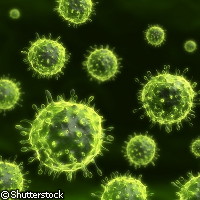New leads in influenza research
Scientists seeking to stop the spread of the H1N1 strain of influenza have generated hundreds of new leads according to two new research studies published in the journal Cell. Two international research teams have taken a comprehensive approach to studying the connection between H1N1 and its interactions with human cells. The results of the studies may lead to both new therapies and new tools for vaccine production. 'Navigating with a map is very different than without it,' said Dr Aviv Regev of the Broad Institute of MIT and Harvard in the US, one of the authors of the first study. 'Without a map, you might explore a small patch and stay very close to that. There might be a protein you know something about and you'll look around there. With a global map, you may find uncharted territory. It's like discovering America. You still have a lot to learn, but at least you know it's there.' Dr Regev and his team came up with some interesting findings, including the fact that the H1N1 virus alters the expression of host proteins in viral genetic material, and in the body's inflammatory response to the virus. The study also revealed some other unexpected factors, such as certain host and viral proteins that play a role in viral infection and the host response, including a network of proteins that binds ribonucleic acid (RNA). These proteins are the components of a signalling pathway that is involved in cell proliferation. The research team carried out molecular testing of the physical interactions between the viral and host proteins as well as genome-wide expression profiling of human cells infected with H1N1. These tests led to more than 1,700 candidate genes that could have an important role in H1N1 infection or host response to it. Each of these genes was then removed in human lung cells to ascertain which ones affect H1N1 replication. The research showed that the virus proteins have many different functions. 'We were impressed by how many host proteins interact with each viral protein,' said Dr Regev. In the second study, researchers used RNA interference to 'turn off' host cell genes one by one to discover which ones change the way that influenza propagates in cells. The result was 120 key genes that could play an important part in H1N1 research. The team found that one particular family of proteins, called IFITM, seems to be an especially important component that helps to halt H1N1. 'Our protein is induced by interferon and it blocks virus at entry,' said Dr Stephen Elledge of MIT in the US, explaining that interferon is produced as an alarm signal to other cells when a cell senses that it has been invaded by a virus. 'If you get rid of IFITM, the virus is replicated 5 to 10 times more efficiently. It blocks 80 to 90 percent of the virus just by itself.' Dr Elledge believes that differences in the amounts of IFITM in humans could account for different levels of severity in flu cases. 'Natural variation [in this gene] could easily translate into resistance or sensitivity,' he said. 'We know some people get the flu and are knocked out while others just sniffle a bit.' The study concludes by saying: 'If IFITM proteins are also rate-limiting for influenza A virus infection in other organisms such as chickens, whose embryos are employed to passage attenuated viruses for vaccine production, the inhibition of IFITM protein expression could reduce the amount of time it takes to produce vaccine and thereby boost yields. This has been a critical issue confounding vaccine production in the current [H1N1] influenza pandemic.'



